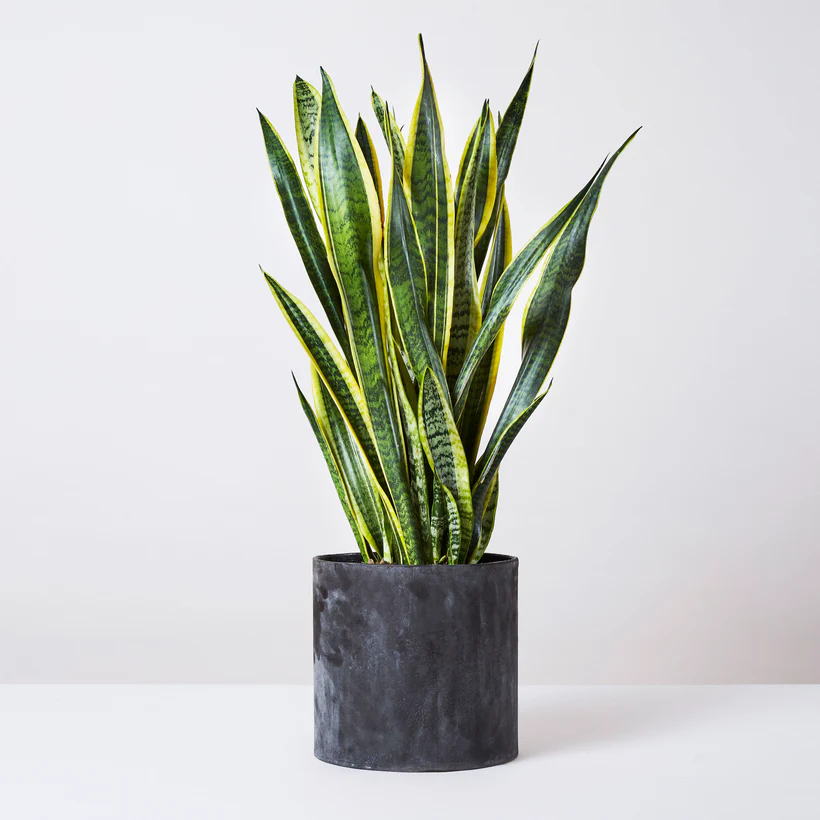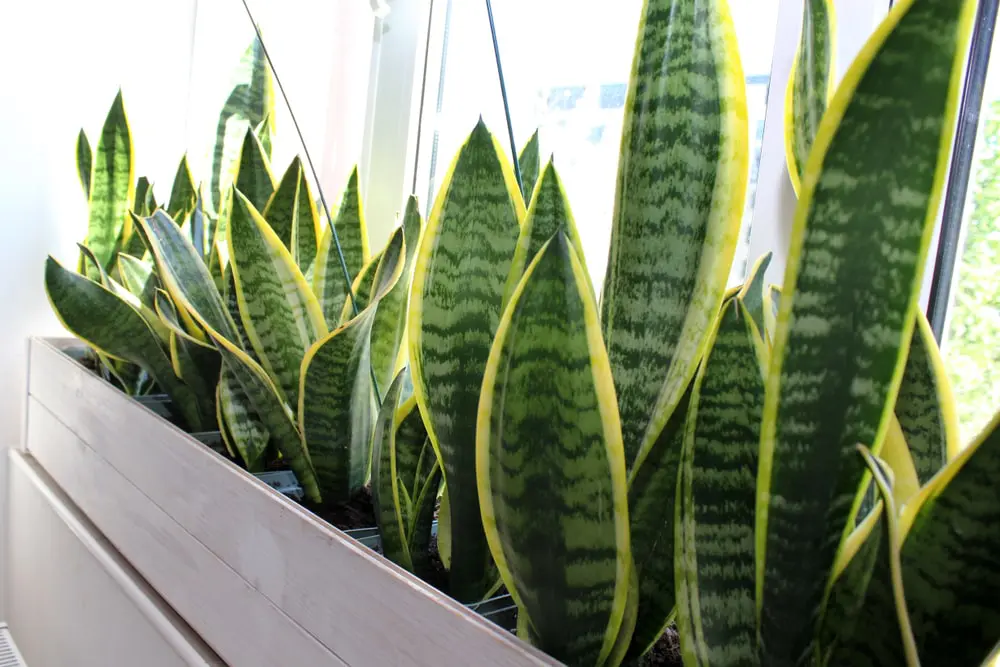If you’re new to houseplants and want something stylish, air-purifying, and nearly impossible to kill, the snake plant (Dracaena trifasciata, formerly Sansevieria) is the perfect choice. Its bold, upright leaves and easygoing nature make it a favorite for plant lovers of all experience levels — especially beginners.
Whether you just brought home your first snake plant or are thinking about adding one to your space, this beginner’s guide to snake plant maintenance will cover everything you need to know to keep your new green friend healthy and thriving. From light and water needs to soil selection and common care mistakes, let’s walk through the basics of this resilient plant together.
Why Choose a Snake Plant?

Snake plants, also known as Mother-in-Law’s Tongue, are popular because they:
- Tolerate neglect
- Thrive in low to bright light
- Survive with minimal water
- Help purify indoor air by removing toxins like formaldehyde and benzene
- Look modern and stylish with their striking, upright leaves
They’re a smart choice for:
- Beginners
- Busy people
- Apartments with limited light
- Offices
- Anyone prone to forgetting to water their plants!
Understanding Your Snake Plant’s Natural Needs
Native to West Africa, snake plants are hardy, drought-resistant plants that naturally grow in dry, rocky soils and can endure long periods without water. They’re adaptable to a wide range of indoor conditions, but understanding their preferred environment will help them thrive in your home.
Basic Snake Plant Maintenance: What You Need to Know

Let’s break down the essentials of snake plant care for beginners.
Light Requirements
Ideal:
- Bright, indirect sunlight.
Tolerates:
- Low-light corners
- Artificial office lighting
- Partial direct sun for a few hours
Avoid:
- Harsh, direct afternoon sunlight (can scorch leaves)
Pro Tip:
If your snake plant’s leaves start to lose their vibrant color or grow slower, it might need a little more light.
Watering Needs
This is where most plant owners struggle, but snake plants are famously drought-tolerant.
Watering Frequency:
- Spring & Summer: Every 2–3 weeks
- Fall & Winter: Every 4–6 weeks
How to Check:
Stick your finger into the soil up to your second knuckle. If it feels dry, it’s time to water. If it’s damp, wait a few more days.
How to Water:
- Water thoroughly until water drains from the pot’s bottom.
- Discard any excess water in the saucer.
- Never let your plant sit in water — it’s prone to root rot.
Pro Tip:
It’s safer to underwater than overwater a snake plant.
Best Soil Type
Snake plants need fast-draining soil.
Ideal mix:
- Cactus or succulent potting mix
OR - Regular potting soil mixed with perlite or coarse sand (2:1 ratio)
Why it matters:
Fast-draining soil prevents root rot by quickly moving excess water away from the roots.
Pot Selection
Choose a pot with drainage holes — this is non-negotiable.
Without good drainage, water can collect at the bottom and rot the roots.
Material:
Terracotta or ceramic pots are best as they allow the soil to dry more evenly.
Temperature and Humidity
Ideal temperature: 60°F–85°F (15°C–29°C)
Tolerates:
- Normal indoor humidity
- Dry air (great for heated homes in winter)
Avoid:
- Cold drafts
- Temperatures below 50°F (10°C)
Pruning and Cleaning Your Snake Plant

Pruning isn’t often needed, but it keeps your plant looking neat and healthy.
When to prune:
- Remove dead, yellowing, or damaged leaves at the base.
- Trim leaves that have brown tips or are misshapen.
Cleaning:
Wipe dust off the leaves every month or two with a soft, damp cloth to help them photosynthesize better.
Fertilizing Snake Plants
Snake plants don’t need much fertilizer.
When to Fertilize:
- During the growing season (spring & summer), every 2–3 months
- Use a diluted, balanced houseplant fertilizer
No need to fertilize in fall and winter when the plant naturally slows its growth.
Repotting Your Snake Plant

Snake plants are slow growers and enjoy being a little root-bound.
Signs it’s time to repot:
- Roots growing out of drainage holes
- Pot cracking or bulging
- Water running straight through the pot too quickly
When to repot:
Every 2–3 years, ideally in spring.
How to repot:
- Choose a new pot 1–2 inches larger in diameter.
- Fill with fresh, well-draining soil.
- Gently loosen the root ball and place it in the new pot.
- Water lightly.
How to Propagate Snake Plants (Optional Bonus)
If you’d like to create new plants from your existing snake plant, propagation is easy.
Methods:
- Leaf cuttings in water
- Leaf cuttings in soil
- Dividing the plant at the roots
Water Method:
- Cut a healthy leaf into sections.
- Place bottom ends in a glass of water.
- Change water every few days.
- Wait 3–5 weeks for roots to appear.
- Plant in soil.
Common Snake Plant Issues & Fixes

| Problem | Cause | Solution |
|---|---|---|
| Yellow, mushy leaves | Overwatering | Cut off affected leaves, reduce watering, repot if necessary |
| Brown leaf tips | Dry air, low humidity, inconsistent watering | Trim tips, mist occasionally or adjust watering |
| Leaning leaves | Overwatering, insufficient light | Adjust watering, provide more light |
| Slow growth | Low light or cold temperature | Move to a brighter, warmer spot |
Beginner Snake Plant Care Mistakes to Avoid
- Overwatering:
The most common cause of death for snake plants. Let soil dry out fully before watering. - Poor Drainage:
Always use a pot with drainage holes. Soggy soil leads to root rot. - Too Much Direct Sun:
While snake plants tolerate some sun, harsh midday rays can scorch leaves. - Fertilizing in Winter:
Snake plants rest in fall and winter. Skip feeding during these months.
Final Thoughts: Snake Plants Are the Ultimate Beginner Houseplant
If you’re just starting your indoor gardening journey, snake plants are one of the best choices you can make. They thrive on neglect, survive a variety of conditions, and make any space look fresher and more modern.
By following this beginner’s guide to snake plant maintenance — offering bright indirect light, occasional watering, well-draining soil, and minimal attention — you’ll enjoy a thriving, air-purifying houseplant that’s as easy to care for as it is beautiful.
So go ahead, bring home that snake plant and watch it grow with ease.






Leave A Comment